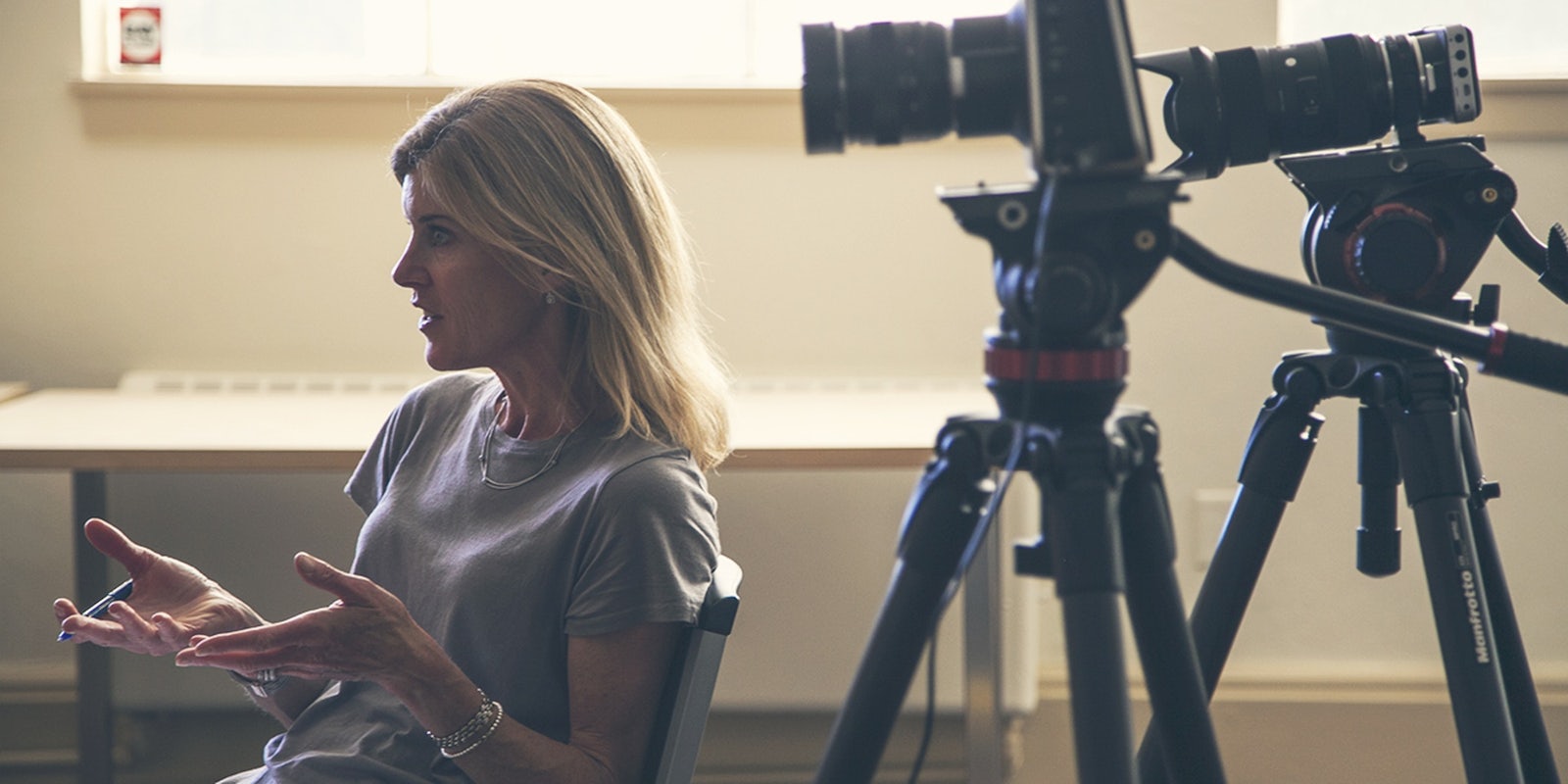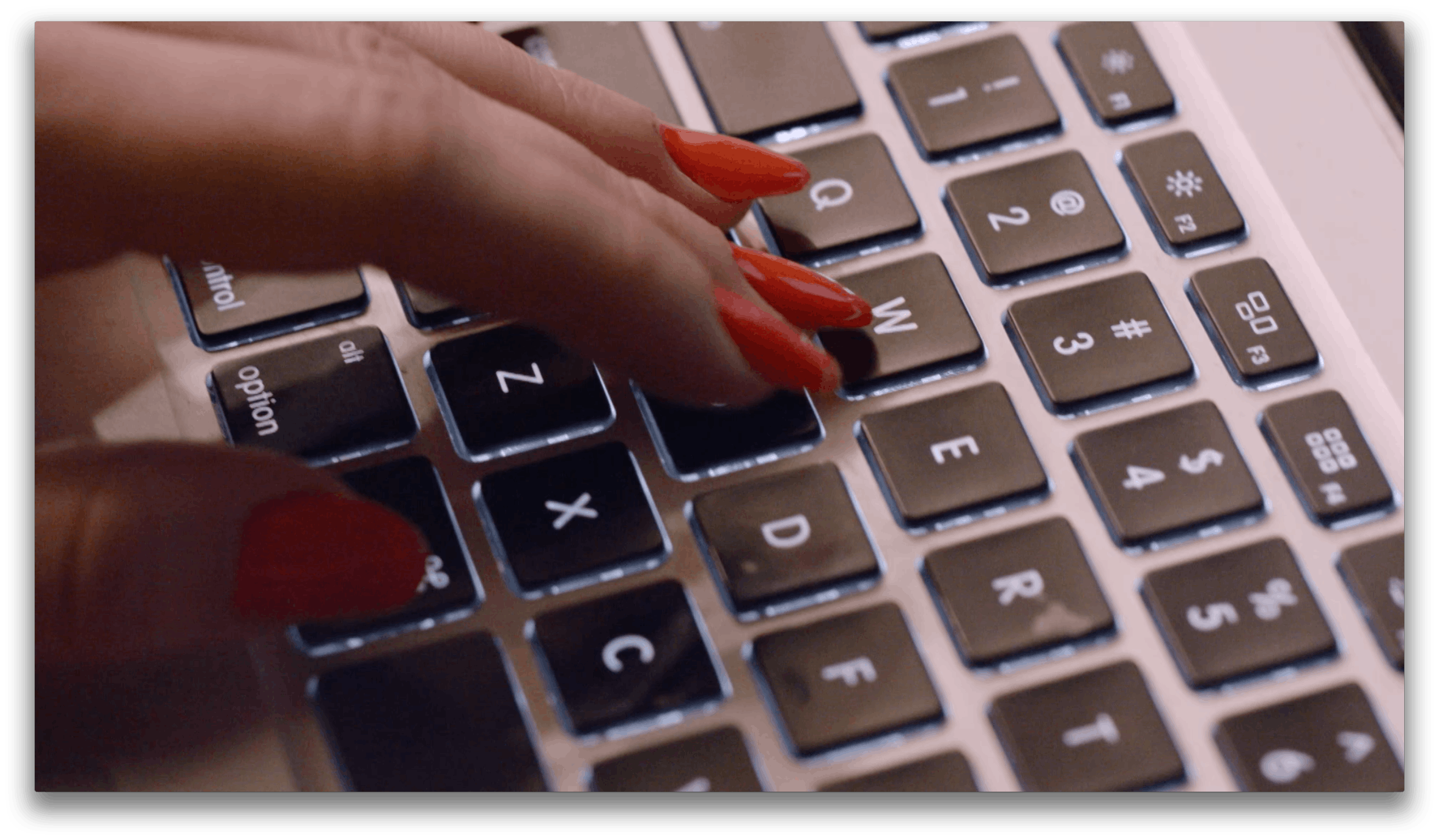When her daughter called home from college commiserating about the challenges of her overwhelming male computer science classes, Robin Hauser Reynolds was first introduced to the frustrations so many women in the tech industry face. It was because of her daughter’s lowered self-confidence among male peers and the growing number of media stories about women’s experiences in technology that she decided to make the documentary CODE: Debugging the Gender Gap.
The film debuted at the Tribeca Film Festival in New York on Sunday to a jam-packed audience. CODE explores the history of women in computer science and the problems they face today, with a number of interviews from women who are challenging the industry to become more diverse and sharing their own experiences with sexism and bias.
“It’s a complicated issue,” Reynolds, director and producer of CODE, said in an interview. “I personally believe that it has to do with this stereotype of this geek genius that you have to be that really pushes women out. I think women don’t see themselves fitting into that stereotype.”
The idea of the geek genius or hoodie-wearing brogrammer is a relatively new idea that’s embodied in Hollywood productions like Silicon Valley or Blackhat. But there wasn’t always such a discrepancy between men and women in computer science. In CODE, Reynolds and producer Staci Hartman took a look at the erasure of women in computing history.
Reynolds echoed the words by Gloria Steinem: “Women have always been an equal part of the past. We just haven’t been a part of history.”
In 1985, women earned 37 percent of undergraduate degrees in computer science. Now, that number is just 18 percent. CODE takes a look at what contributed to that steep decline: When personal computing and gaming became popular among young men, so too did hacking and programming. The same year computer science degrees peaked for women, a study by the National Science Foundation found that 55 percent of women didn’t use a personal computer frequently, while only 27 percent of men said the same.
Reynolds said of the biggest surprises she learned while filming the documentary is that so many more women earned computer science degrees in the 1980s.
Silicon Valley claims to operate as a “meritocracy,” but this idea that people are hired and promoted exclusively based on merit is entirely false.
“I think gaming also has a lot to do with [the cool geek stereotype],” Reynolds said. “So many of the games are oriented toward young boys and not girls. The boys have been gaming since they were seven, and when they’re gaming like that they’re trying to find cheats, so they’re understanding the architecture behind the basic structure of games.”
The toy industry has also contributed to the idea that boys are drawn to engineering and puzzles while girls are given Barbies and pink houses to play with. But as the gender-gap in science, technology, engineering and mathematics (STEM) widens, toy companies and mobile application developers are working to find ways to encourage girls to learn programming concepts.
Goldieblox is among the most popular toymakers targeting future female engineers, though their methods aren’t without controversy. LittleBits turns circuits into programmable LEGO-like toys that children can use to understand how to write code. And Kodable, a mobile app that teaches programming concepts to elementary school students, is finding its way into classrooms around the country.
CODE highlighted many of these toys and games targeting the “pipeline” of young women who are capable of pursuing STEM careers but might find themselves intimidated. The games themselves offer new opportunities for students and could help close the gender gap, at least at a young age, but it’s also the responsibility of parents to ensure their girls can have access to the same types of engineering opportunities their boys do. And Reynolds hopes this message gets across to parents who view the film.
“As a mother I wish I had known about this issue when my children were really young or before I became a mother,” Reynolds said. “I do believe it’s unconscious bias on the part of parents in the way we treat our girls versus boys that end up sort of tracking because of that… we tend to let our boys stay in front of computers longer than we let our girls stay in front of computers.”
Tracy Chou, a software engineer at Pinterest interviewed for CODE, said that it’s not enough to get girls interested in programming, but companies need to foster environments that don’t force women to exit the industry more than twice as much as their male counterparts. Forty-one percent of women leave careers in technology after 10 years compared to just 17 percent of men.
Chou is partly responsible for the increase in diversity awareness at technology companies. In 2013, she published the post “Where are the numbers?” asking tech companies to release diversity data to illustrate how diverse their workplaces are. That is to say, not very diverse at all. She set up a GitHub repo to track the number of women in engineering at different technology companies, and contributions from women around the world demonstrated that the gender discrepancy is severe at tech companies everywhere.
Eventually, corporations let the public peek into their organizational data. Google led the charge to become more transparent about gender and race of its employees, and highlighted the embarrassing numbers that illustrate what so many in the industry already knew—technology is run by white male employees. Facebook, Yahoo, Microsoft, Apple, and a number of other companies quickly followed suit, though their numbers were all similar, underscoring the need to hire more diverse team members.
Silicon Valley claims to operate as a “meritocracy,” but this idea that people are hired and promoted exclusively based on merit is entirely false. Biases, whether unconscious or not, make people hire individuals who look and act like them, creating a culture that perpetuates the symptoms of a toxic environment.
Designer and developer Julie Ann Horvath is one of the most high-profile examples of a woman in tech being forced out by a culture that neglected to create a welcoming environment. In CODE, Horvath describes her experiences at social coding company GitHub, where she was the first female designer and developer on the team. She recalls a number of incidents of sexism and harassment that led her to make a very public exit—including one day when she saw a group of men sitting around watching two young women hula hooping at the office.
As Reynolds describes it, sexism and harassment in technology might not be explicit behaviors that are obvious to pin down. The Mad Men era of butt-slapping and complimenting bust size has been replaced by human resource videos warning colleagues of firable behaviors. It’s the “death by one thousand cuts,” that drives women out of the industry. An accruement of insults, sarcastic comments, or behaviors that overtime become too much to deal with.
Building diverse teams isn’t about checking off boxes or filling a quota.
Although the majority of tech companies still have an uphill battle to better balance diversity, Reynolds says that Etsy, the online marketplace popular among makers, is making positive steps toward balancing those numbers, and is a good example for the industry to copy.
In 2012, the company made a concerted effort to hire more women by sponsoring female developers who attended Hacker School, a learn-to-code program in New York. The company also made sure that hiring managers and interview panels represented the diverse culture of the company, and made sure to recruit people from underrepresented groups in the industry. Etsy grew its female engineering team by 500 percent between 2012 and 2013. The company statistics are still unbalanced, but with 31 percent of its tech team made up of women, it’s far more balanced than any other tech company that has released diversity data.
Building diverse teams isn’t about checking off boxes or filling a quota. Studies show that by hiring team members of different genders, races, sexual orientations, and disabilities actually improves the creativity and interpersonal work relationships, and can make people smarter. It’s not just good for a company culture, it’s actually good for the company’s bottom line.
For over a year, Reynolds and her team tried to capture the stories, facts, and historical information that encapsulates the environment women in technology have had to deal with over the past decades, culminating in the modern day workplace that statistics demonstrate is overwhelmingly white and male. And while the numbers displayed provide qualitative data, it’s the personal stories from women in the documentary that really illuminate the problems with the industry.
In the late 1990s, Microsoft ran a focus group to figure out the best way to create a cartoonish personal assistant, later to be known as “Clippy.” The data from the study overwhelmingly found that women thought the cartoon paper clip was offensive and leery, whereas men did not. As former Microsoft executive Roz Ho, described in CODE, men at Microsoft were willing to throw out the huge data set and ignore the women’s feedback because they couldn’t see it.
Women’s voices have gone unrecognized for decades in the tech industry, and a variety of factors that begin as early as elementary school prevent things from changing. CODE hopes to elevate these voices, and help people—from startup founders to venture capitalists to individuals outside the industry—better understand how to create balanced, welcoming environments and make sure women are represented and respected in tech.
In conjunction with the documentary, ShesCoding.org was created to help people close the gender gap. Resources for fair pay, career advancement, leadership, gender discrimination and many more can be found with links to organizations and studies that work to bring more women into the workforce.
“The most important thing when a woman in tech that’s been in tech for over 30 years or just two years, comes up to me after they see the film and say, ‘Oh my god that’s exactly how I felt,’” Reynolds said. “They know. They’re the ones who have been in the industry. To me, that’s incredibly rewarding.”
Photo via CODE: Debugging the Gender Gap



